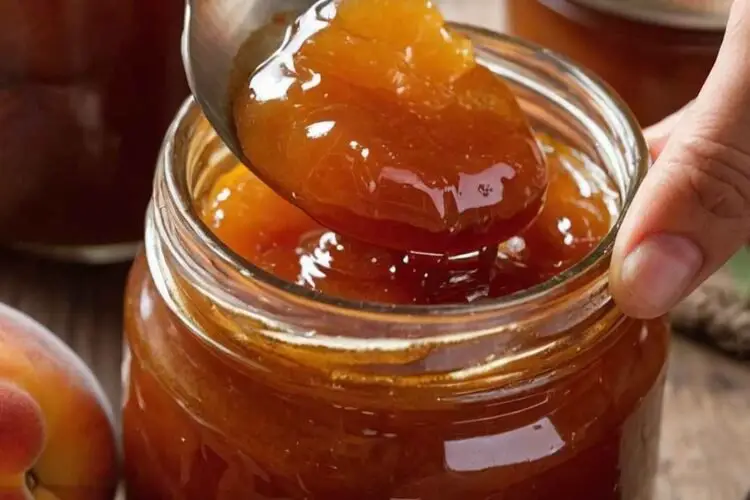Before diving into the delicious world of apricot jam, let’s talk about some pairings that can truly elevate your experience. Imagine spreading that sweet, tangy goodness on a warm scone. It’s pure bliss.
Or maybe you prefer it on a soft, buttery croissant. How about adding a spoonful to plain Greek yogurt for a quick breakfast? Honestly, it works wonders. You could also use it as a glaze for grilled chicken or pork; the flavors dance together seamlessly. Lastly, if you’re feeling adventurous, why not spoon some over vanilla ice cream? Trust me, you’ll thank yourself later.
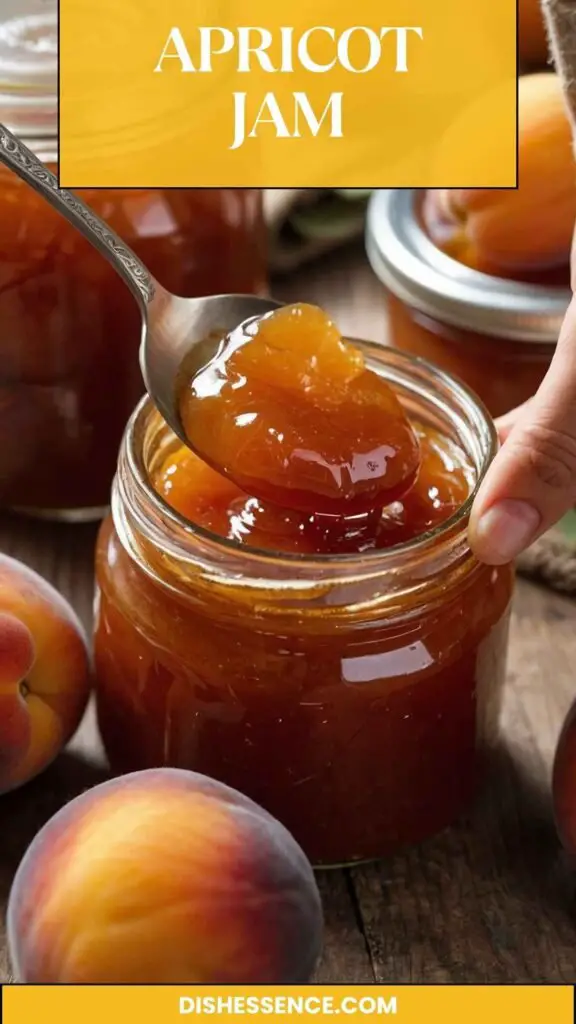
You’ll Also Like These Recipes
Let me take you back to a sunny afternoon in my grandmother’s kitchen. The sun filtered through the curtains, casting warm light on the jars lined up on the countertop. They gleamed as if full of liquid gold.
This was her apricot jam, the stuff of memories. Each jar held whispers of summer, moments of joy, and recipes passed down through generations. Making apricot jam became a ritual, a bonding time filled with laughter, and a whole lot of sweetness. Crafting this delightful spread isn’t just about following a recipe; it’s about embracing tradition and sharing love.
Apricot jam has a special place in many hearts and pantries. It’s a crowd-pleaser that complements various dishes, making it a versatile staple. In this guide, you’ll discover everything from how to make it to some creative ways to enjoy it. Grab your apron and let’s get started!
What is Apricot Jam?
At its essence, apricot jam is a simple yet delightful preserve made from ripe apricots, sugar, and a splash of lemon juice. The magic happens when these ingredients meld together through cooking, creating a sweet, tangy spread. Its vibrant orange hue is not just a feast for the eyes; it also brings a burst of flavor to anything it touches.
The beauty of apricot jam lies in its simplicity. It showcases the natural flavor of apricots without overwhelming it. Unlike some jams that use complex flavorings, this jam allows the fruit to shine. Pair it with bread, cheese, or even as a glaze for meats. The applications are endless!
Why You’ll Love This Apricot Jam?
You’ll soon find out why this apricot jam is bound to become a beloved staple in your home. For starters, the flavor is unbeatable. Fresh apricots bring a balance of sweetness and a slight tartness, creating a bright taste that’s both refreshing and comforting.
Nutrient-Rich: Apricots are not only delicious but nutritious. They’re a good source of vitamins A and C, potassium, and dietary fiber. Incorporating apricot jam into your diet can give you a tasty way to enjoy these benefits.
Versatility: One jar can serve multiple purposes. Use it in desserts, on breakfast items, or as an ingredient in savory dishes. It harmonizes well with cheeses, enhances yogurt, or serves as a tantalizing topping for pancakes.
Simplicity: The process of making apricot jam isn’t complicated. It’s straightforward enough for beginners, yet rewarding enough to satisfy seasoned canners. The satisfaction of creating something from scratch is unmatched.
Homemade Goodness: Making your own jam connects you to the process of food. It’s about control over ingredients and flavors, and knowing precisely what goes into your food. Plus, there’s a unique joy in serving something homemade to friends and family.
The Ingredients You Will Need To Make Apricot Jam
Let’s take a closer look at what you’ll need to whip up this delightful apricot jam:
- 2 pounds of fresh apricots: Look for ripe, fragrant fruit.
- 1 ½ cups of granulated sugar: This brings sweetness to the jam.
- ¼ cup of freshly squeezed lemon juice: The acidity balances the sweetness and helps with preservation.
- 1 packet of fruit pectin (optional): If you prefer a thicker consistency.
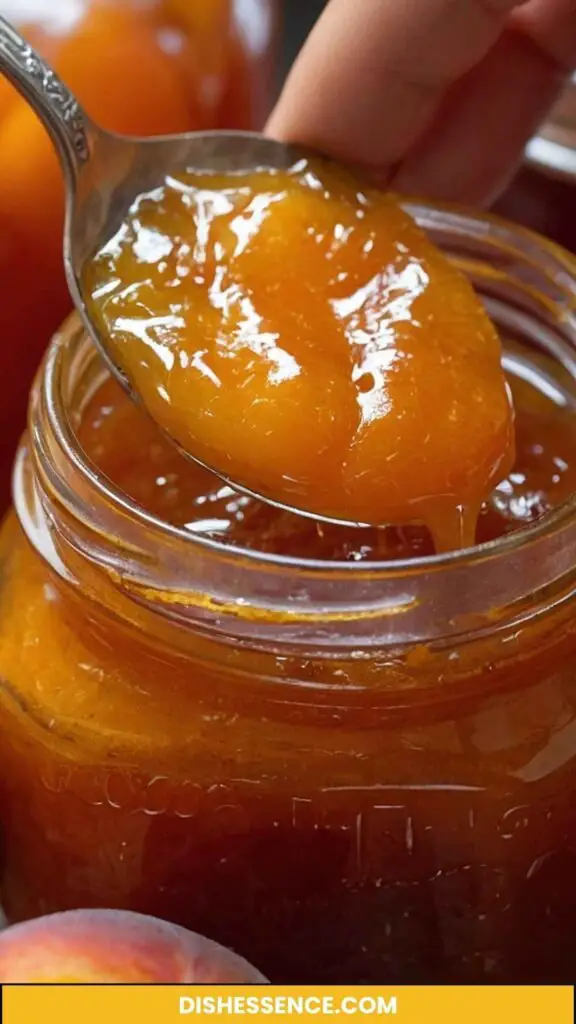
Directions
Now, let’s get to the fun part—making the jam!
Step 1: Prepare the Apricots
Start by washing the apricots in cool water to remove any dirt or residue. Cut each apricot in half, removing the pit. Chop them into small pieces to ensure even cooking. You want to release their flavor, and chopping helps speed up the process.
Step 2: Combine Ingredients
In a large pot, combine the chopped apricots, sugar, and lemon juice. Gently stir until all the sugar gets coated by the apricots. Let this mixture sit for about 30 minutes. This allows the apricots to release their juices—trust me, it’s a game changer.
Step 3: Cook the Mixture
Now, turn the heat to medium-high. Bring the mixture to a boil, stirring frequently to prevent sticking. The goal is to dissolve the sugar and break down the fruit. This process generally takes around 10 minutes.
Step 4: Add Pectin (If Used)
If you’re using pectin, add it to the boiling mixture now, stirring thoroughly. Continue cooking for about 2-3 more minutes. You’ll notice a change in consistency; the mixture will thicken up a bit.
Step 5: Check For Doneness
To check if your jam is ready, you can perform the plate test. Take a spoonful of the jam and drop it onto a cold plate. Let it sit for a minute before pushing it with your finger. If it holds its shape, you’re ready for canning. If not, continue boiling for a couple more minutes and repeat the test.
Step 6: Fill Your Jars
Prepare sterilized jars and funnels. Ladle the hot jam into the jars, leaving about ¼ inch of headspace at the top. Wipe the rims clean and seal them with the lids. If you prefer, you can process the jars in a water bath for longer shelf life.
Notes
Here are some helpful tips to consider when making your apricot jam:
- Choose Ripe Apricots: Overripe apricots can lead to a runnier jam. Go for fruit that’s fragrant and slightly firm.
- Adjust Sugar to Taste: If you’re looking for a less sweet option, feel free to reduce the sugar slightly. The jam may just be a little less thick.
- Adding Spices: For a unique twist, consider adding a pinch of cinnamon or vanilla extract while cooking.
- Test for Thicker Jam: If you prefer a denser consistency, increase cooking time or add a little more pectin.
- Use Fresh Lemon Juice: The acidity from fresh lemon not only adds flavor but helps with preservation.
Storage Tips
Proper storage ensures that your apricot jam maintains its flavor and texture. Here are some simple pointers:
**- Cool Completely: Allow the jars to cool completely at room temperature before storing them in the fridge or pantry.
- Label and Date: If you’re making multiple batches, label your jars with dates so you can keep track.
- Refrigeration: Unopened jars can last up to one year in a cool, dark place. Once opened, store in the fridge and use within three weeks.
- Freezing: If you have extra jam, you can freeze it. Use freezer-safe containers, leaving some headspace to allow for expansion.**
Nutrition Information
The nutritional benefits of apricot jam are worth noting. For a single tablespoon of apricot jam, the values typically break down to:
- Calories: Approximately 50
- Total Fat: 0 grams
- Carbohydrates: 13 grams
- Sugars: 12 grams
- Fiber: 0 grams
- Protein: 0 grams
This jam is a delightful way to indulge your sweet tooth without too much guilt.
Serving Suggestions
Here are five delicious ways to enjoy apricot jam:
- On Toast: Spread a generous layer on your morning toast. The combination of crunchy bread and sweet jam is unbeatable!
- With Cheese: Pair it with a soft cheese like brie or goat cheese. The creaminess complements the jam’s sweetness perfectly.
- In Salad Dressings: Mix it into vinaigrettes for a sweet touch. It balances out acidity beautifully.
- As a Glaze: Brush it on grilled meats like chicken or pork for a glaze that brings the whole meal together.
- For Breakfast: Stir it into oatmeal or yogurt for a morning treat. This adds natural sweetness and flavor.
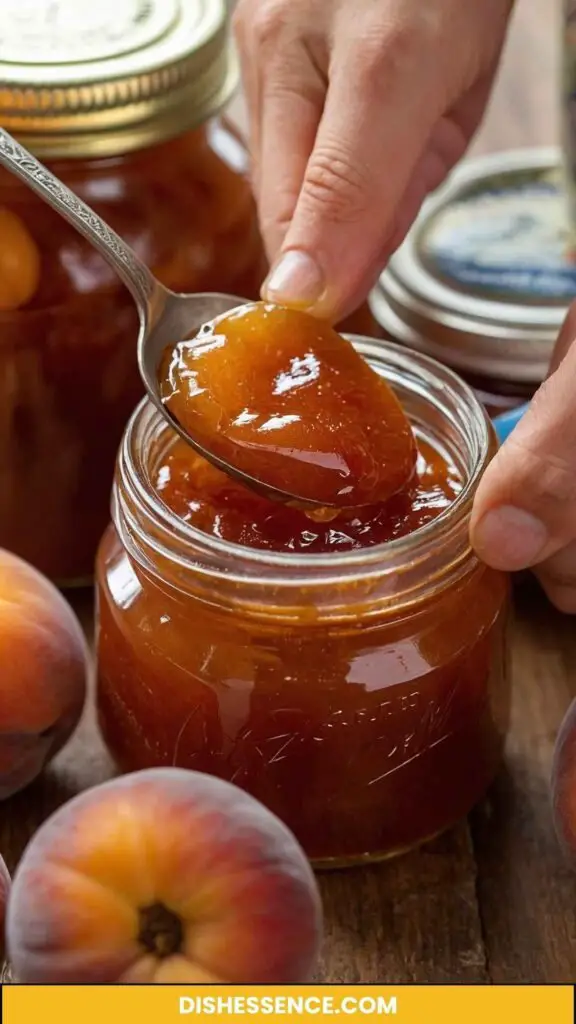
What Other Substitutes Can I Use in Apricot Jam?
If apricots aren’t your thing, or you want a twist, consider these substitutes:
- Peaches: Peach jam has a very similar flavor profile and texture, making it a fantastic alternative. Just swap apricots for peaches.
- Plums: Plum jam provides a deeper color and unique flavor. You’ll get a similar sweetness with a richer taste.
- Cherries: For a bolder profile, opt for cherries. They produce a gorgeous jam that still carries the essence of summer.
- Figs: Fig jam offers a rich sweetness with a hint of earthiness. If you enjoy complex flavors, this is your go-to.
- Mango: Mango jam brings a tropical flair. Its sweet and slightly tangy taste can transform your dishes into something fresh.
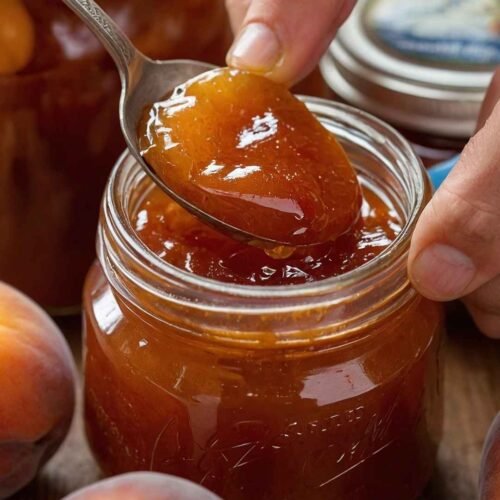
Apricot Jam
Equipment
- Large Pot, Jar
Ingredients
- 2 pounds of fresh apricots: Look for ripe fragrant fruit.
- 1 ½ cups of granulated sugar: This brings sweetness to the jam.
- ¼ cup of freshly squeezed lemon juice: The acidity balances the sweetness and helps with preservation.
- 1 packet of fruit pectin optional: If you prefer a thicker consistency.
Instructions
Step 1: Prepare the Apricots
- Start by washing the apricots in cool water to remove any dirt or residue. Cut each apricot in half, removing the pit. Chop them into small pieces to ensure even cooking. You want to release their flavor, and chopping helps speed up the process.
Step 2: Combine Ingredients
- In a large pot, combine the chopped apricots, sugar, and lemon juice. Gently stir until all the sugar gets coated by the apricots. Let this mixture sit for about 30 minutes. This allows the apricots to release their juices—trust me, it’s a game changer.
Step 3: Cook the Mixture
- Now, turn the heat to medium-high. Bring the mixture to a boil, stirring frequently to prevent sticking. The goal is to dissolve the sugar and break down the fruit. This process generally takes around 10 minutes.
Step 4: Add Pectin (If Used)
- If you’re using pectin, add it to the boiling mixture now, stirring thoroughly. Continue cooking for about 2-3 more minutes. You’ll notice a change in consistency; the mixture will thicken up a bit.
Step 5: Check For Doneness
- To check if your jam is ready, you can perform the plate test. Take a spoonful of the jam and drop it onto a cold plate. Let it sit for a minute before pushing it with your finger. If it holds its shape, you’re ready for canning. If not, continue boiling for a couple more minutes and repeat the test.
Step 6: Fill Your Jars
- Prepare sterilized jars and funnels. Ladle the hot jam into the jars, leaving about ¼ inch of headspace at the top. Wipe the rims clean and seal them with the lids. If you prefer, you can process the jars in a water bath for longer shelf life.
Notes
- Choose Ripe Apricots: Overripe apricots can lead to a runnier jam. Go for fruit that’s fragrant and slightly firm.
- Adjust Sugar to Taste: If you’re looking for a less sweet option, feel free to reduce the sugar slightly. The jam may just be a little less thick.
- Adding Spices: For a unique twist, consider adding a pinch of cinnamon or vanilla extract while cooking.
- Test for Thicker Jam: If you prefer a denser consistency, increase cooking time or add a little more pectin.
- Use Fresh Lemon Juice: The acidity from fresh lemon not only adds flavor but helps with preservation.
Nutrition
Frequently Asked Questions
1. Can I use frozen apricots in the jam?
Absolutely! Frozen apricots work well. Just ensure they are thawed and drained of excess water. The flavor and texture may be slightly different, but they will still produce a delightful jam.
2. How long will the jam last once opened?
Once opened, store your jam in the refrigerator. It generally lasts for about three weeks. Make sure to use a clean spoon each time to avoid contamination.
3. Can I make apricot jam without pectin?
Yes, you can make jam without pectin! Just be aware that it may take longer to reach the desired thickness. Cooking the fruit long enough will usually do the trick.
4. What’s the easiest way to sterilize jars?
To sterilize jars, wash them in hot, soapy water or run them through the dishwasher. Place them in a pre-heated oven at 200°F (93°C) for 10-15 minutes to ensure they are fully sterilized.
5. How do I know if the jam is spoiled?
Check for any off-smells, mold, or changes in color. If the lid is bulging or the seal has broken, it’s best to discard the jar.
6. Can I substitute honey or maple syrup for sugar?
Yes, but keep in mind that the texture and flavor might slightly differ. Honey or maple syrup will also add depth but may require adjustments in cooking time or acidity to maintain the tartness.
Conclusion
Making apricot jam isn’t just about following a recipe; it’s about preserving memories, flavors, and the essence of summer. Whether you’re enjoying it on toast or concocting a unique glaze for savory dishes, this jam can uplift your meals. With its vibrant color, delightful taste, and endless applications, apricot jam is bound to find a special place in your kitchen.
So, gather your ingredients, roll up your sleeves, and get ready to embark on a journey filled with warmth, nostalgia, and sweetness. You might even find a new family tradition in the process. Now, who’s ready to savor the harvest of summer with a brilliant jar of homemade apricot jam? Let’s get jamming!

